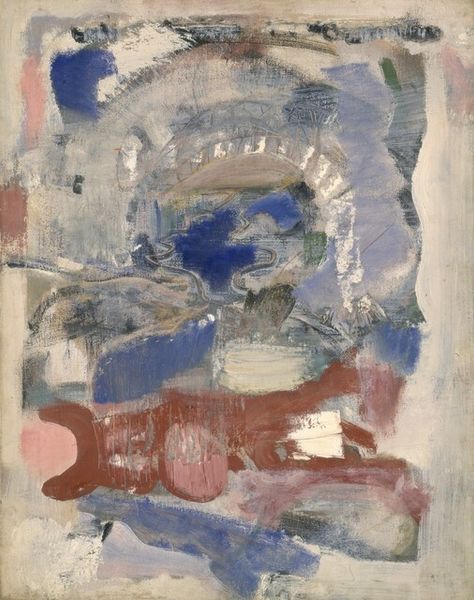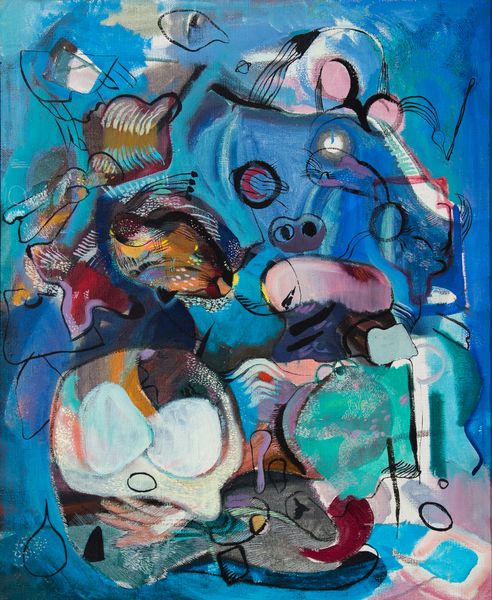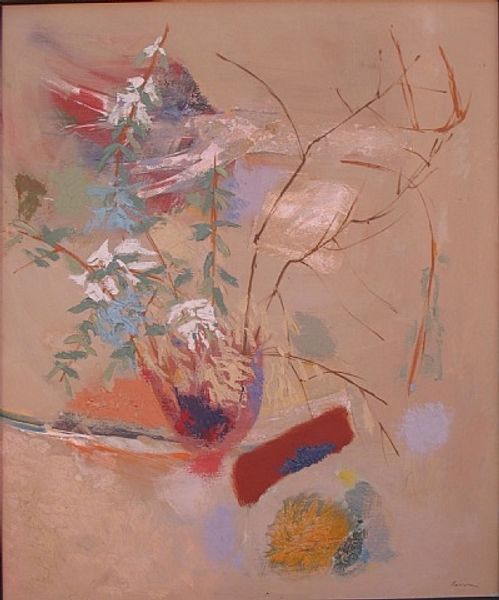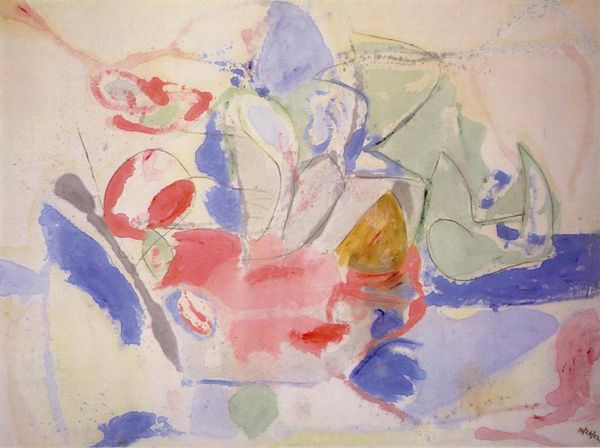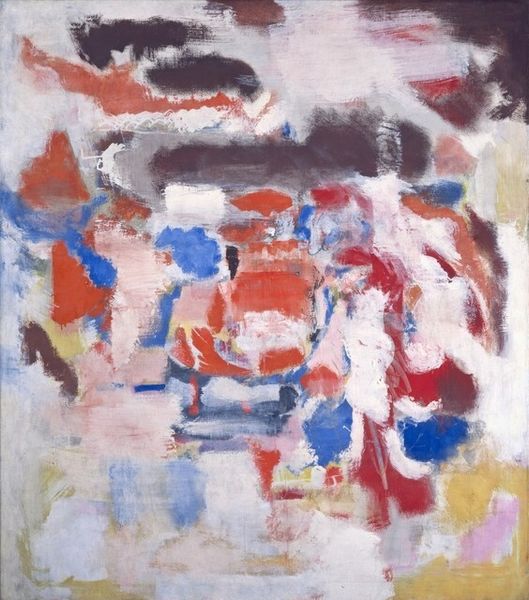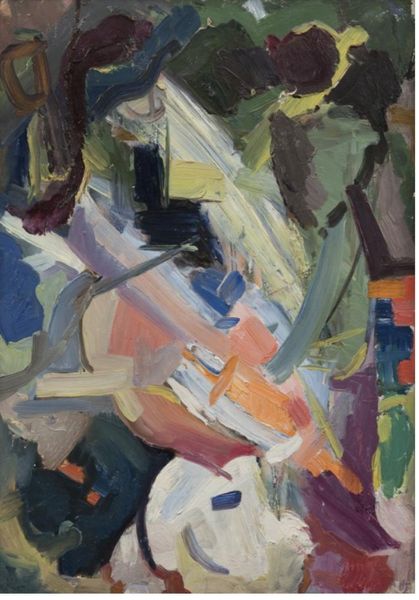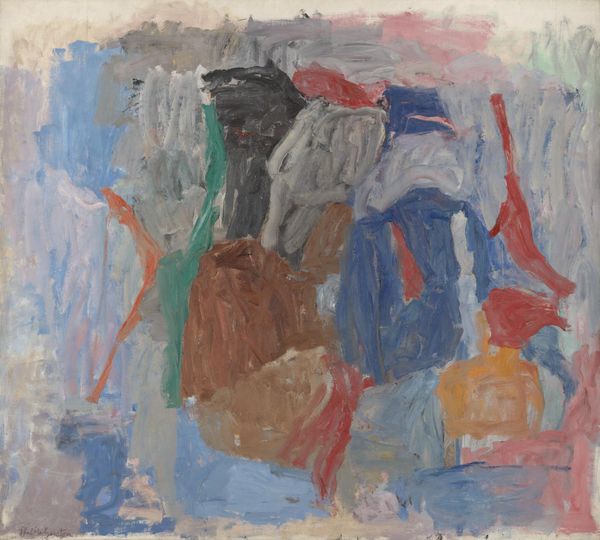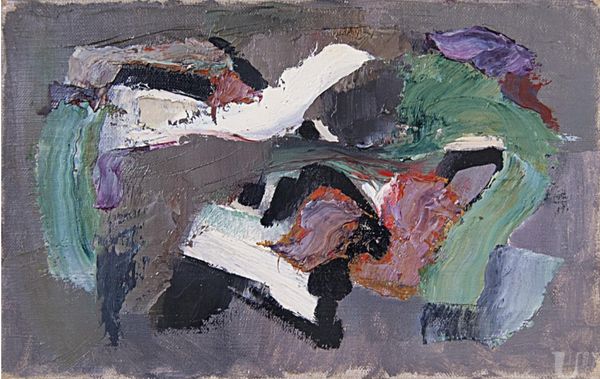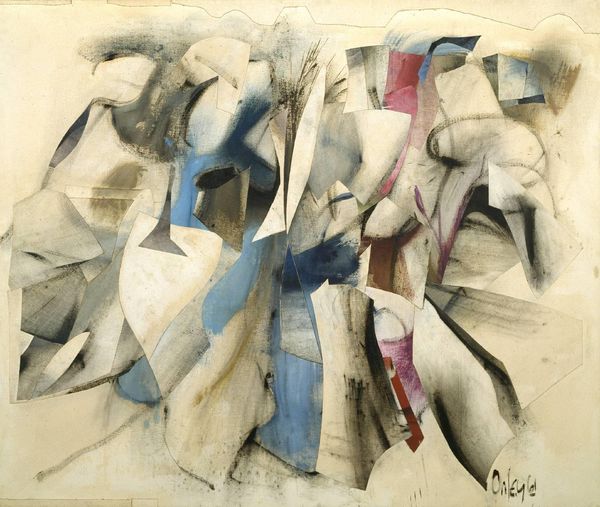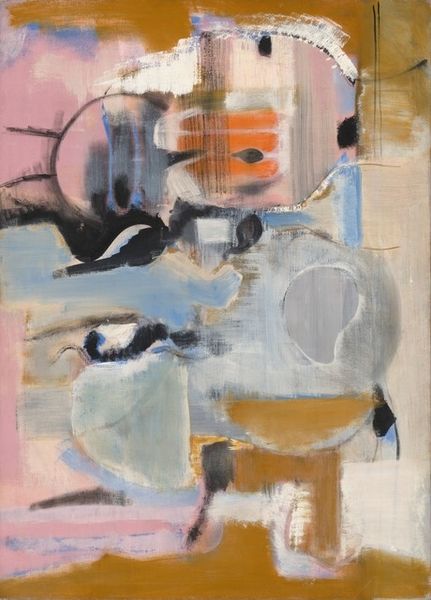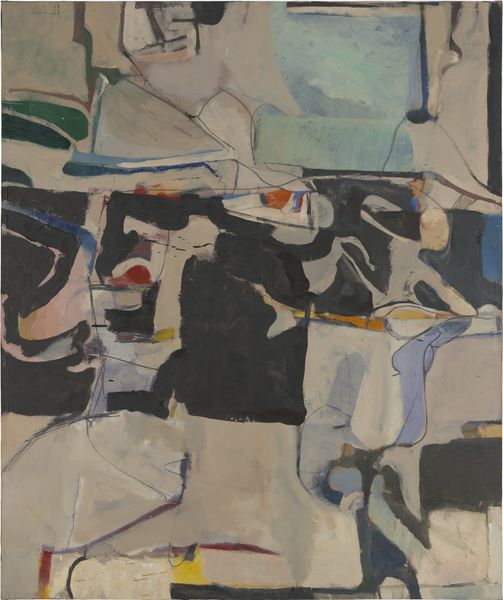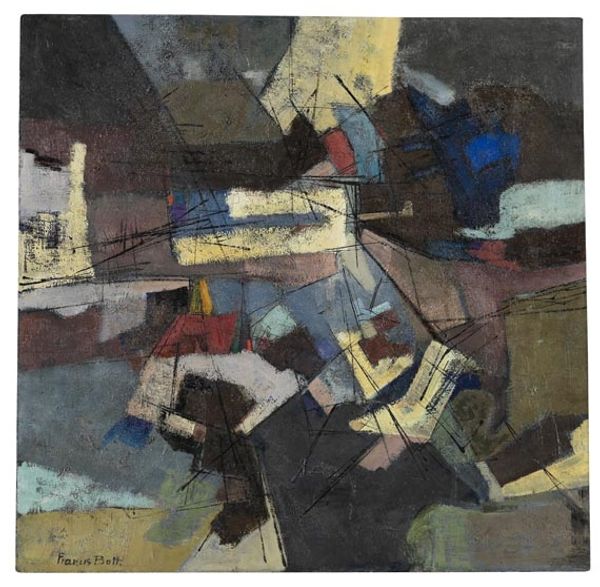
painting, acrylic-paint, gestural-painting
#
abstract-expressionism
#
abstract expressionism
#
painting
#
colour-field-painting
#
acrylic-paint
#
form
#
gestural-painting
#
acrylic on canvas
#
abstraction
#
modernism
Copyright: Hélène de Beauvoir,Fair Use
Curator: This vibrant and evocative abstract work is, intriguingly, simply called "Untitled" by Hélène de Beauvoir. We believe it was likely made using acrylic on canvas. What's your initial take on it? Editor: I'm immediately struck by the paint application. It's almost like a textile in its layering—the process looks very additive, building up densities with delicate chromatic harmonies. It almost obscures any direct sense of her labor and its own materiality. Curator: That's a fascinating perspective. I see a rather complex symbolic vocabulary at work. Those circular forms—repeated throughout—echo archetypal symbols of wholeness, possibly referencing a sort of personal cosmogram? Editor: Maybe, but consider this—the circular forms could simply be a product of the brushstrokes, responding to the canvas size in the moment of creation. A sort of visual mark left in production and labor. Does attaching all these archetypal elements distract from an honest appraisal of its physical manifestation? Curator: I understand your view on the physical act of painting, but it's not just forms, it's the colors as well, that bear weight. The soft blues and greens intertwined with lavenders often suggest peace, healing and intuition. Given Beauvoir’s intellectual circle and social context, perhaps the abstraction alludes to states of consciousness that society generally ignores? Editor: And maybe, given the relative anonymity of women artists at the time, these "soft" colors may have in turn impacted the valuation of this art, deemed somehow "feminine." If this was a Franz Kline painting in monochrome blacks and whites, the material act and physical exertion would be foregrounded as inherently heroic. But in this case, are we focusing on material history and its gendered legacy, or philosophical meaning? Curator: Both approaches have value. A cultural anthropologist, for example, could study this as an artifact embedded within layers of artistic intention, cultural influence, and maybe an effort to subvert gendered expectations through symbolism. Editor: And an art conservator, such as myself, would see evidence of its historical existence in each cracking pigment. So maybe it becomes, what you bring to it, influences what you see here and why it matters. Curator: Indeed. Whether seeking personal insight or evidence of its creation, Hélène de Beauvoir's "Untitled" offers plentiful material for reflection.
Comments
No comments
Be the first to comment and join the conversation on the ultimate creative platform.
